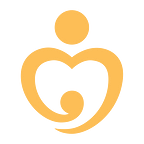Mourning and Moving Forward
Two Years After Devastating Earthquake
Sindhupalchok, Nepal
It is an important day in Salina Majhi’s household. Seated on a straw mat on the floor of her two-room house, Salina is preparing lentils in an oven that looks too big for her family of four. She has borrowed an extra cylinder of gas to cook for the occasion. Rice, mutton, tomato pickle, boiled potatoes and cauliflower are kept ready in metal containers, covered with a sheet of newspaper. Her husband is making popcorn on the firewood stove outside. The only thing left to be arranged for is the home-brewed rice beer, a necessary component of gatherings in this traditional fishing community.
Salina’s four-month-old son is asleep in a hammock fashioned out of a bedsheet. Her daughter, who just turned six, is on guard to look after him. She gently rocks the hammock from time to time, helping her brother have a sound sleep on this busy day.
The family is marking the death ritual of Salina’s two sons and mother-in-law. The rituals are observed four times a year for the first five years after a death, and annually after that. Communal traditions like this pose a major financial burden on the family.
“We have to invite at least two members from every household in the village,” says Salina. “No matter how hard you try to control the expense, you need at least twenty thousand [Nepali rupees] ($200) to worship the departed souls and treat the community on behalf of them. Otherwise, the souls of the deceased will not reach heaven.”
Salina lost both of her sons and mother-in-law to the earthquake that devastated Nepal in 2015. On that day, April 25, she and her husband went to work as usual. She worked for a daily wage on the field of a neighbor; he refined sand from the bed of the Indravati River for a construction company, also on a daily wage. Her mother-in-law took care of the children in their absence.
As Salina was preparing the fields for the next planting, the ground suddenly began to roll and shake. Scared for her children, she rushed back to her house. A tragedy awaited her there.Her daughter — now six — was severely bruised. Her two-year-old son and her youngest, less than a year old, were buried in the rubble along with her mother-in-law. Their bodies were dug out four days later.
“God didn’t have mercy on this poor woman,” Salina laments, recalling that horrific day. Following the tragedy, she went into severe depression. Time healed her wounds slowly; remarkably, being pregnant again helped her recover.
Salina and her family live on the edge of a hill facing the Indravati River in Bahunepati, Melamchi in Sindhupalchok, the district that was hardest hit by the earthquake. Her two-room house was reconstructed by the Nepal Government’s Earthquake Reconstruction Project in the severely hit districts. These low, one-story dwellings are made out of concrete blocks, based on the government’s strict guidelines to resist earthquakes.
One Heart Worldwide (OHW) launched its earthquake relief campaign in Sindhupalchok and Dhading — one of the hardest hit districts — three days after the disaster. OHW focused our programs on ensuring that pregnant women, already a vulnerable group in normal circumstances, received the care and attention they desperately needed. Because most of the health facilities in these two districts, including the birthing centers, were completely destroyed or unsafe to enter, we set up and equipped tents to serve as temporary birthing centers.
A little more than two years later, OHW has brought Sindhupalchok and Dhading into the second phase of our program. This is the most resource-intensive phase of development, where we upgrade health facilities into fully functioning government-certified birthing centers. We also train skilled birth attendants, community outreach providers, and community stakeholders to gradually take ownership of program leadership. To date, we have served 10,626 individuals through health camps in the districts of Dhading and Sindhupalchok.
Despite all the support, Salina’s most recent pregnancy might have also led to tragedy, if it were not for OHW’s partnership with Embrace Innovations at the Melamchi Primary Health Care Center (PHCC), where she had her delivery.
Salina was in good health during her delivery, but she gave birth to a premature baby. Her son weighed less than 3 lbs. and was kept in an Embrace Nest Baby Warmer for 24 hours, which played a critical role in saving his life.
The Embrace Nest Baby Warmer is a low-cost infant incubator, designed for low-resource settings that do not always have reliable electricity. Resembling a sleeping bag, the baby warmer is wrapped around a premature infant, while a pouch of phase-change material keeps the baby’s body at exactly the right temperature for up to four hours. After that, the pouch can be recharged by submerging it in boiling water for a few minutes.
Small and light, the Embrace Nest is easy and inexpensive to transport to rural villages in Nepal. The entire sleeping bag can be sanitized in boiling water. OHW is piloting this innovative infant warmer in the Sindhupalchok district. So far, five babies have used the warmer at the health center or during the transportation. It will be essential in saving the lives of thousands of premature and low-birth weight babies who are prone to hypothermia while being transported to a hospital, or in the harsh conditions of remote Nepal, where 81,000 babies are born premature every year.
“I am grateful to the medical staff at the Melamchi PHCC for saving my baby,” says Salina. “I don’t know how I would have been able to withstand the loss, if something had gone wrong.”
Having already gone through so much grief, Salina feels as though she has been given a second life.
Originally published at https://www.oneheartworldwide.org on January 16, 2018.
